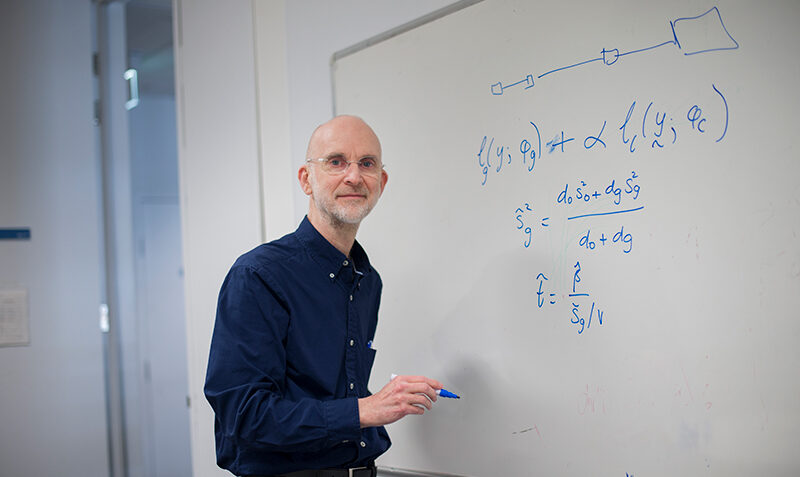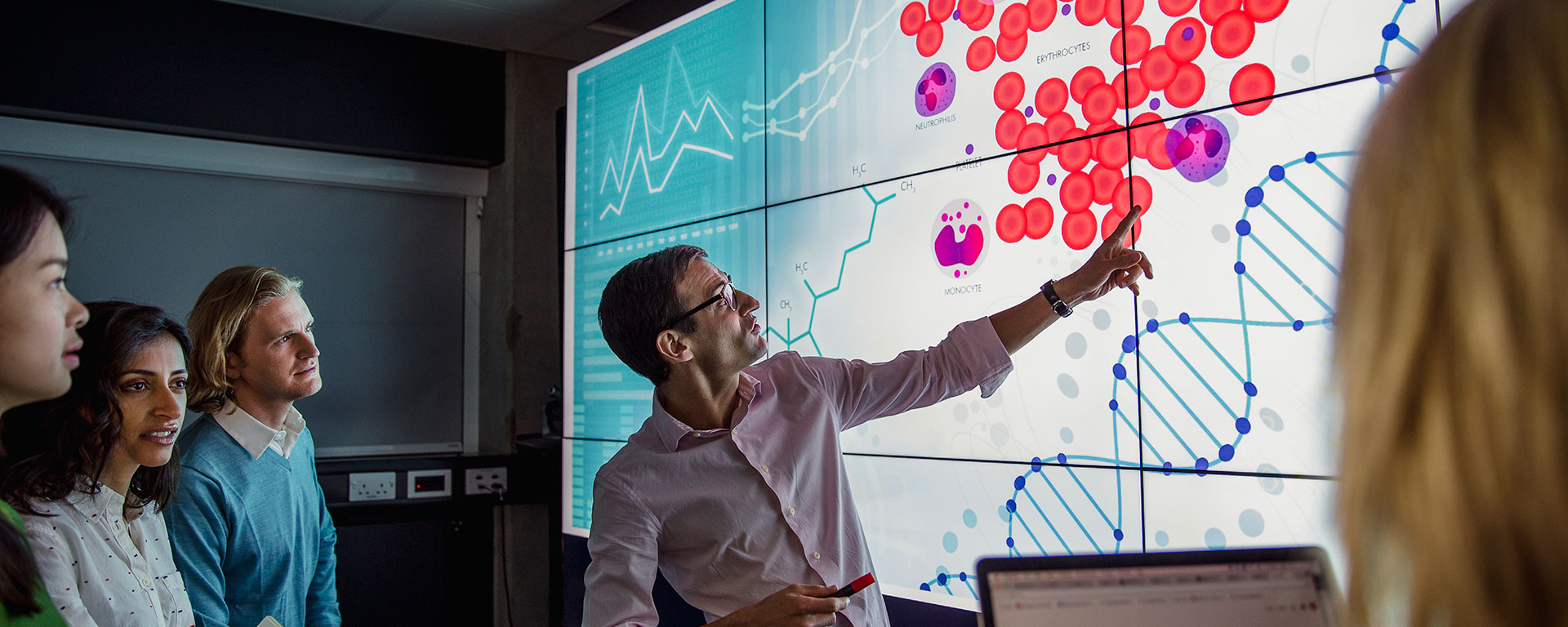8 Simple Techniques For Bioinformatics Tutor
8 Simple Techniques For Bioinformatics Tutor
Blog Article
How Bioinformatics Tutor can Save You Time, Stress, and Money.
Table of ContentsLittle Known Questions About Bioinformatics Tutor.How Bioinformatics Tutor can Save You Time, Stress, and Money.Some Known Incorrect Statements About Bioinformatics Tutor 6 Easy Facts About Bioinformatics Tutor ExplainedSome Ideas on Bioinformatics Tutor You Need To Know
Of the total amount individuals associated with the training, 80% were students from public higher education and learning organizations, while the continuing to be 20% came from personal establishments. To qualify for a certificate of involvement, students were called for to participate in at the very least 90% of the overall training hours. As an outcome of this need, a remarkable 95% of the individuals effectively acquired their certificates, having not only fulfilled the minimum participation criteria but also completed all appointed activities throughout the training.
Throughout the height of the COVID-19 pandemic, particularly in between June and August 2020, the task team was entrusted with arranging specialized training in bioinformatics. This training was especially intended at trainees from the research study team Core for Study in Applied Computer at the Federal College of Pará (UFRA) The adaptation to remote knowing platforms due to the pandemic created a chance to check out brand-new training methods and electronic devices that improved both reach and efficiency.
This training course was developed to provide an accessible yet thorough summary of Artificial Knowledge strategies, especially as used in bioinformatics (Bioinformatics Tutor). This online layout made it possible for participation from trainees throughout Brazil, many of whom might not have had the opportunity to attend in-person sessions.
Some Ideas on Bioinformatics Tutor You Should Know
A noteworthy function of this program was its emphasis on hands-on understanding. Roughly 50% of the total training hours were devoted to functional tasks where students constructed smart versions and applications in a variety of clinical domain names, including genes, molecular biology, and environmental data analysis. Commonly used frameworks and tools such as Spyder, Google Colab, Jupyter Notebooks, and Orange were incorporated into the coursework. These systems allowed pupils to engage in real-time data control, model training, and formula experimentation.
The program brought in 80 participants in total amount. Sixty of them were associated with various higher education establishments in the state of Pará, while the remaining twenty originated from organizations located in five various other Brazilian states. This wide geographical representation highlighted the nationwide rate of interest in bioinformatics and the expanding demand for specialized abilities in this field. By presenting Artificial Intelligence in a useful and relevant context, the effort served to link the space in between concept and real-world application, supplying trainees with a strong foundation for future research study or employment in the field.
The training effort formed part of a wider academic outreach effort called the Bioinformatics when traveling task. This project has, throughout the years, introduced loads of pupils to the globe of bioinformatics and computational biology. The Visit Website occasions held under this umbrella effort have actually occurred throughout multiple regions and years, as summed up in Table 1 (Listing of occasions, places, years, and overall varieties of trainees and teachers)
Among the most impressive results of the Bioinformatics when driving campaign has been its contribution to the development of decentralized research study groups. Several of these groups, originally combined by their participation in training events, have since taken place to create independent scientific research in collaboration with neighborhood scholastic establishments. The training not just promoted clinical reasoning within the context of bioinformatics however additionally triggered collective partnerships that expanded past the training setting. These cooperations have brought about boosted local clinical performance and contributed meaningfully to the growth of the more comprehensive bioinformatics area in Brazil.
Little Known Facts About Bioinformatics Tutor.
The project itself was conceptualized and organized by MB and RR, who looked after the planning and implementation of each action. Lectures were delivered by a multidisciplinary group consisting of megabytes, FA, EF, KP, JS, DM, SN, LP, LG, RR, air conditioner, and ih. The same group, excluding IH and RR, likewise functioned as tutors for the useful training modules. Financing for the task was offered through the give 88887.200562/ 2018-00 from CAPES. The writers expand their appreciation to every person that added to the understanding of this job, whether directly or indirectly, since its inception.
The Federal University of Pará's Office of Study (PROPESP/UFPA) likewise provided monetary assistance, particularly for the production of the last manuscript. The writers proclaim no commercial or economic conflicts of rate of interest that might have affected the research. All viewpoints and analyses expressed in this write-up are entirely those of the writers and do not necessarily reflect those of their respective establishments, the publisher, editors, or customers included in the publication process.

The Only Guide for Bioinformatics Tutor
From a pedagogical point of view, the mentor approach used in the training was intentionally interactive. Classes were carried out in a manner that encouraged pupil participation and conversation, surpassing memorizing memorization to explore how concepts are developed, used in every day life, and examined in scholastic setups. The educational approach focused on supporting both strong and battling pupils, supplying individualized assistance, and building confidence with sustained mentorship and persistence.

Each team, containing around 36 participants, was sustained by 3 coaches-- the majority of whom were postdoctoral researchers with specialized knowledge. These coaches not just assisted develop the team jobs but additionally facilitated their execution, ensuring that each research study question was both relevant and properly challenging. The objective was to give a naturally practical context that participants might discover with flexible purposes and access to curated datasets.
For additional understandings right into the method and outcomes of this project-based learning approach, readers Read More Here are guided to S1 Text, that includes in-depth summaries of the instructional structure, evaluation strategies, and project themes utilized in the training sessions.
Not known Details About Bioinformatics Tutor
Of the total amount participants entailed in the training, 80% were trainees from public greater education and learning organizations, while the remaining 20% came from private establishments. To qualify for a certificate of involvement, trainees were needed to attend at least 90% of the total training hours. Especially, past the trainees who enrolled in the training sessions, 7 knowledgeable trainers took part in delivering the programs, while three committed research teachers collaborated the total training process. Around 50% of the overall training hours were devoted to useful tasks where students constructed smart designs and applications in a variety of scientific domains, including genes, molecular biology, and environmental data like it analysis. The training not just cultivated scientific thinking within the context of bioinformatics yet additionally stimulated collaborative partnerships that expanded past the training atmosphere.
Report this page